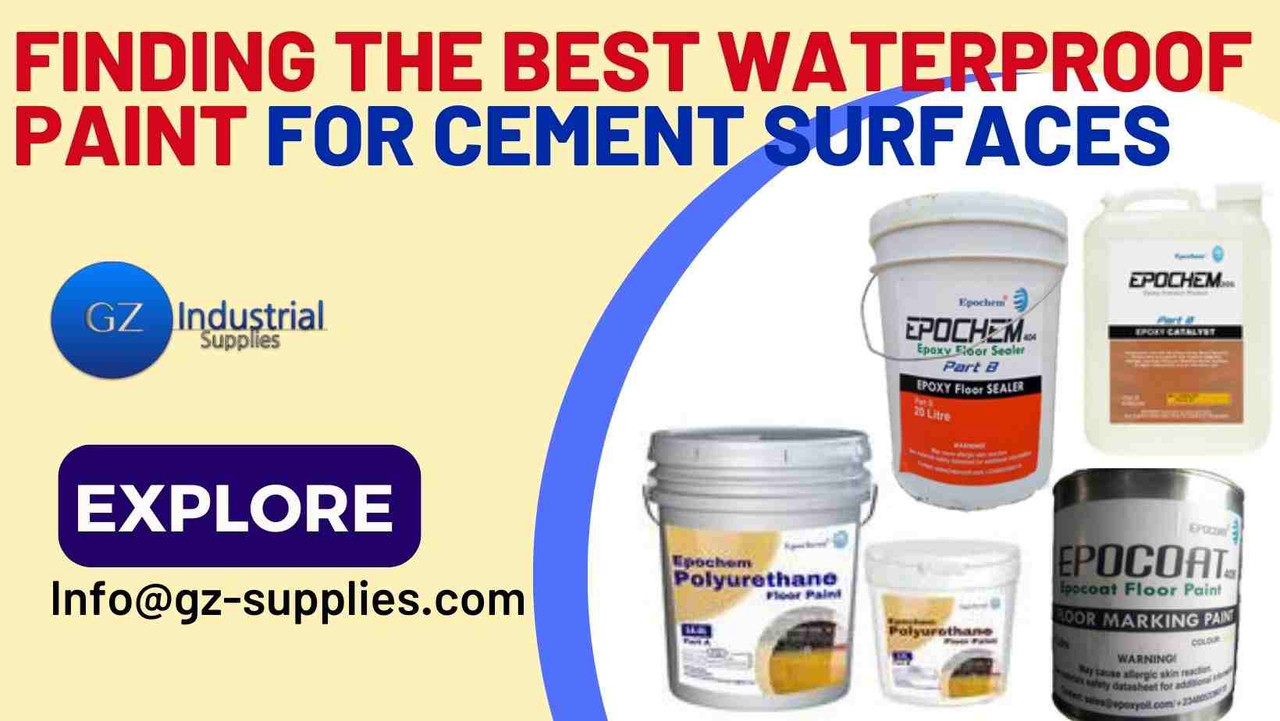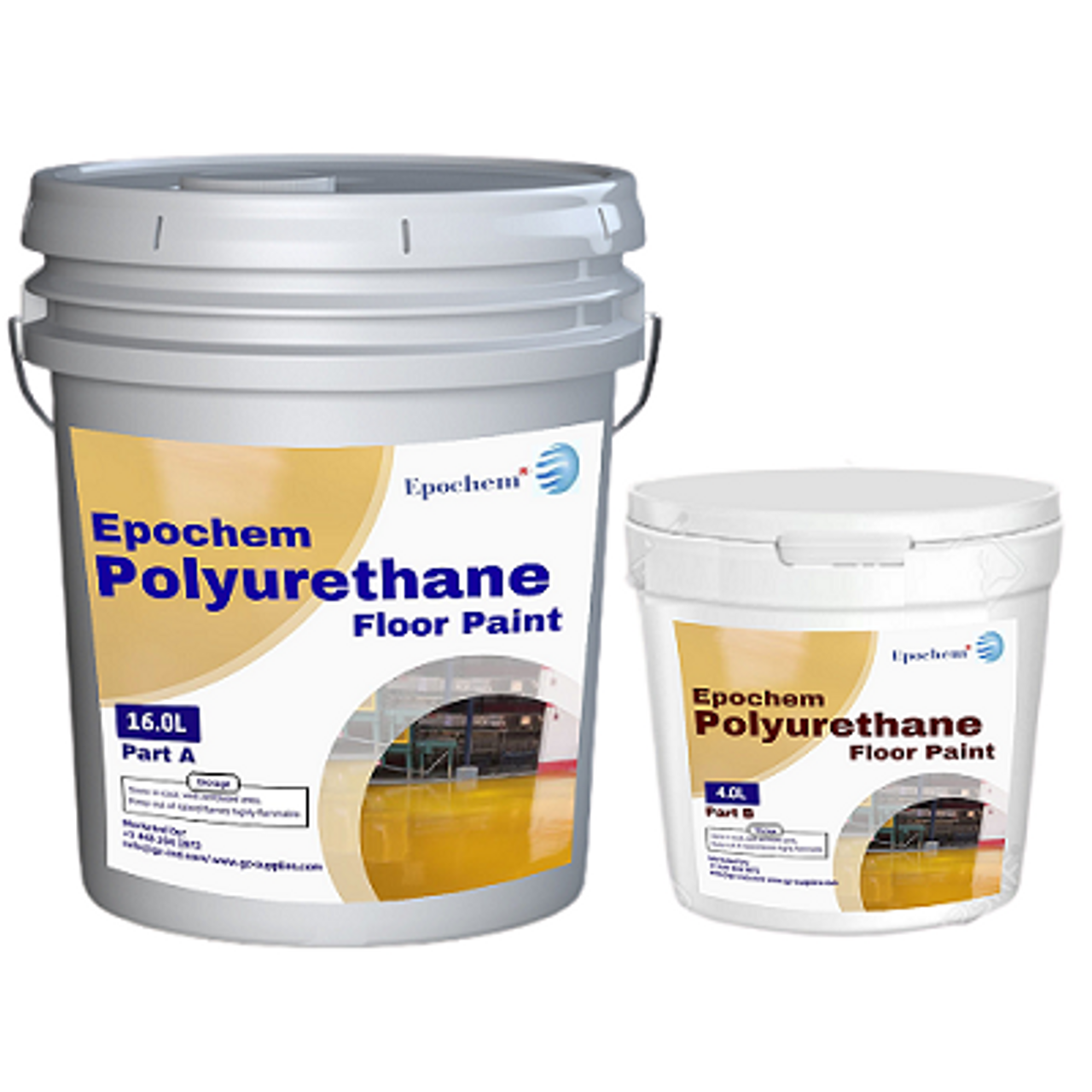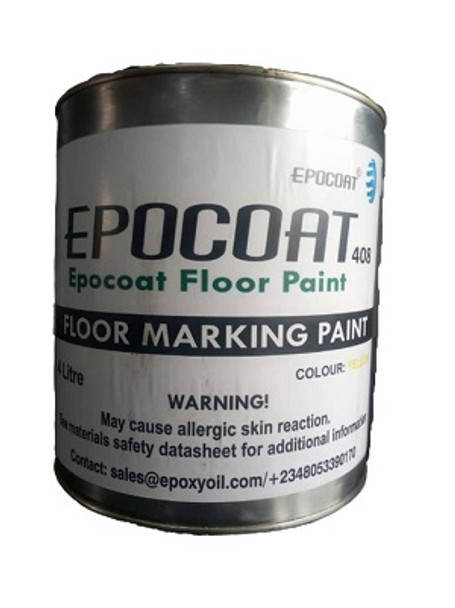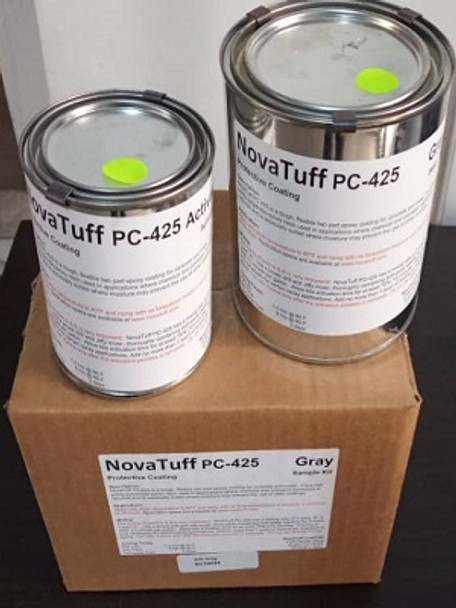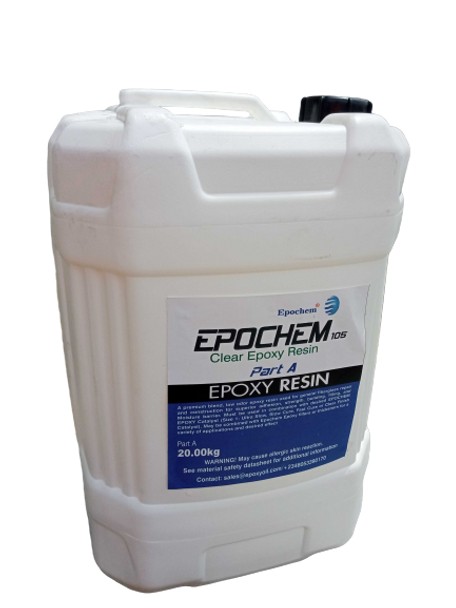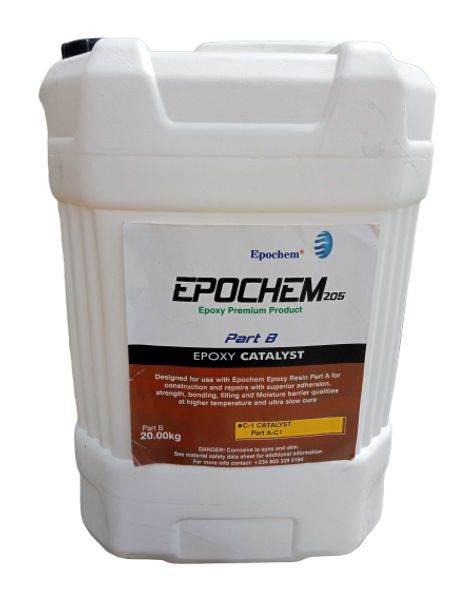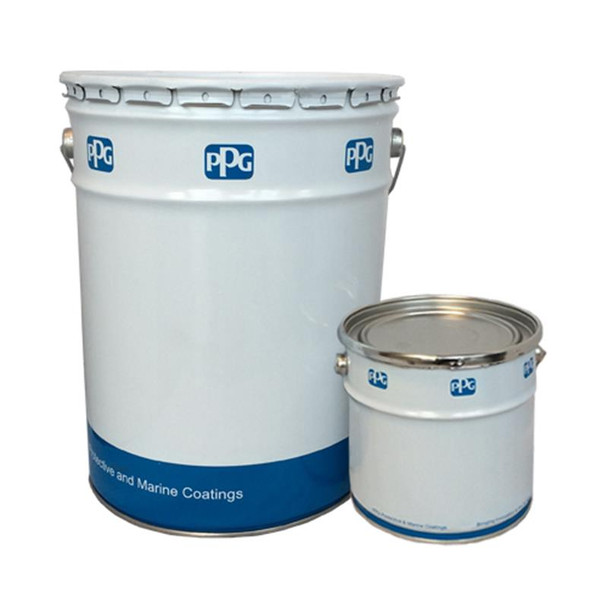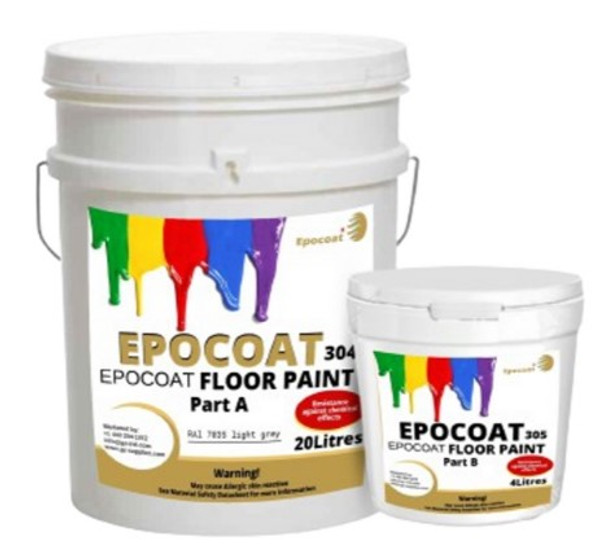Finding the Best Waterproof Paint for Cement Surfaces
Key Takeaway
- Durability and Protection: Waterproof paint for cement surfaces provides a protective barrier that prevents water damage, cracking, and mold growth.
- Surface Compatibility: Choose a paint specifically designed for cement to ensure proper adhesion and long-lasting results.
- Types of Waterproof Paint: Options include acrylic-based, epoxy-based, and silicone-based paints, each suited for different applications and levels of exposure to moisture.
- Aesthetic Appeal: Waterproof paints come in various colors and finishes, allowing you to enhance the appearance of your cement surfaces while protecting them.
Introduction
When it comes to protecting and preserving cement surfaces, the search for the best waterproof paint is a quest for durability, resilience, and longevity. Whether you're looking to safeguard your basement walls, revitalize your concrete patio, or weatherproof your garage floor, the importance of choosing the right waterproof paint cannot be overstated. In this guide, we will embark on a journey to explore the world of waterproof paints designed specifically for cement surfaces.
Cement is a popular construction material known for its strength and versatility. However, it's also vulnerable to moisture, which can lead to cracks, deterioration, and even structural damage over time. To shield your cement surfaces from the detrimental effects of water, you need a waterproof paint that not only provides a protective barrier but also enhances the aesthetics of your spaces.
In the pages that follow, we'll delve into the key considerations for selecting the best waterproof paint for cement. From understanding the properties that make a paint truly waterproof to exploring the various types and brands available, we'll equip you with the knowledge needed to make an informed decision. We'll also touch on application techniques and maintenance to ensure that your cement surfaces remain not only watertight but also visually appealing.
So, whether you're a homeowner looking to tackle a do-it-yourself project or a professional seeking the ideal product for your clients, join us in this exploration of finding the best waterproof paint for cement surfaces. Your journey begins here, and the result will be cement surfaces that stand strong against the test of time and water.
Buy Online... Epochem Polyurethane Floor Paint
Understanding Waterproof Paint For Cement Surface
What is waterproof paint?
Waterproof paint is a specialized type of paint formulated to create a waterproof barrier on various surfaces, including cement. It contains waterproofing agents, resins, and additives that prevent moisture and water from penetrating the surface it covers. Unlike regular paint, waterproof paint is engineered to withstand water, making it ideal for applications where moisture resistance is essential.
How does it work on cement?
Waterproof paint creates a protective layer on cement surfaces. When applied, it forms a barrier that repels water, preventing it from infiltrating the pores of the cement. This is crucial for protecting the cement from damage caused by water penetration, such as cracking, spalling, and efflorescence. The effectiveness of waterproof paint on cement surfaces largely depends on the quality of the paint, proper surface preparation, and the paint's ability to bond with the substrate.
Key characteristics to look for When searching for the best waterproof paint for cement surfaces, it's essential to consider several key characteristics:
1. Waterproofing properties: Ensure that the paint is specifically designed to be waterproof and not just water-resistant.
2. Adhesion: The paint should bond well with the cement surface for long-lasting protection.
3. Durability: Look for a paint that can withstand exposure to weather, UV rays, and high traffic (for outdoor applications).
4. Flexibility: The paint should be able to expand and contract with the cement to prevent cracking and peeling.
5. Breathability: A good waterproof paint should allow moisture trapped in the cement to escape while preventing external moisture from entering.
6. Resistance to mold and mildew: Especially important for damp environments.
7. Ease of application: Consider the practicality of applying the paint, including drying time and cleanup.
Buy Online... Floor Marking Paint EPOCOAT 408
The Best Waterproof Paint for Cement Surface
Cement surfaces are known for their durability and versatility, but they are not impervious to the elements. To ensure your concrete floors, walls, or other cement structures remain in top condition, it's essential to invest in the best waterproof paint. Among the array of options available, a few products stand out for their exceptional performance and reliability. Let's take a closer look at three of the best waterproof paint solutions for cement surfaces:
1. Epocoat Floor Marking Paint:
Key Features:
1. Durability: Epocoat floor marking paint is engineered to withstand heavy foot traffic and other forms of wear and tear. It's an excellent choice for industrial and commercial settings where durability is paramount.
2. Waterproofing: This paint forms a robust waterproof barrier, protecting the underlying cement from moisture infiltration. This feature is especially crucial for basement floors and areas exposed to frequent spills.
3. Versatility: Epocoat is suitable for various applications, including garage floors, warehouse spaces, and manufacturing facilities. Its versatility makes it a top choice for those seeking an all-purpose waterproof paint.
4. Quick Drying: With a relatively fast drying time, Epocoat allows for minimal downtime during application, making it a convenient option for busy environments.
2. Epochem Resin and Hardener:
Key Features:
1. Customization: Epochem offers a resin and hardener system, allowing for the customization of your waterproof paint. You can mix the two components to achieve the desired level of protection and durability.
2. Strong Adhesion: The epoxy system provides excellent adhesion to cement surfaces, ensuring that the waterproofing barrier remains intact and long-lasting.
3. Chemical Resistance: Epochem's epoxy paint system is resistant to a wide range of chemicals, making it an ideal choice for areas exposed to spills or chemical agents.
4. Seamless Finish: When properly applied, epoxy-based paints create a smooth and seamless finish that not only enhances the appearance of your cement surface but also prevents water intrusion effectively.
3. Epochem Polyurethane Floor Paint:
Key Features:
1. UV Resistance: Polyurethane floor paint by Epochem is known for its exceptional UV resistance. This feature makes it ideal for outdoor applications, such as concrete patios, decks, or exterior walls.
2. Flexibility: Polyurethane paints are flexible and can accommodate the natural expansion and contraction of cement surfaces. This flexibility ensures that the waterproof barrier remains intact, even in areas with temperature fluctuations.
3. Aesthetics: Epochem's polyurethane floor paint comes in various colors and finishes, allowing you to achieve not only waterproofing but also aesthetic enhancement. Whether you want a glossy or matte appearance, this paint offers versatile options.
Buy Online... NovaTuff PC-425 Protective Waterproof Coating
Types of Waterpproof Paint for Cement
1. Acrylic waterproof paint
Acrylic waterproof paint is a popular choice due to its versatility. It forms a flexible and durable waterproof barrier, making it suitable for a wide range of cement surfaces. Acrylic paints are available in various formulations, including elastomeric acrylics, which can stretch and contract with the cement, making them ideal for areas with temperature fluctuations.
2. Epoxy waterproof paint
Epoxy waterproof paint is exceptionally durable and resistant to abrasion, making it a top choice for high-traffic areas and surfaces exposed to chemicals. However, it can be less breathable than other options and is typically used for indoor applications like basement floors.
3. Latex waterproof paint
Latex waterproof paint is a water-based option that offers ease of application and low VOC content, making it environmentally friendly. It's suitable for indoor applications, such as walls and floors in basements and laundry rooms.
4. Silicate-based waterproof paint
Silicate-based waterproof paint is highly breathable and chemically reactive with the cement, creating a strong bond. It's often used for masonry surfaces, providing good waterproofing properties and durability.
5. Cementitious waterproof coatings
Cementitious coatings are specially designed for cement surfaces. They create a waterproof barrier and are commonly used in both indoor and outdoor applications. These coatings are versatile, but they may require more maintenance over time.
Each type of waterproof paint has its own set of advantages and drawbacks, so it's essential to choose the one that best suits your specific needs and the surface you plan to coat.
Buy Online... Epoxy Resin Epochem 105, 20kg keg
Chossing The Right Waterproof Paint
1. Assessing your specific needs and surface Consider the environment and use of the cement surface you're painting. Is it exposed to moisture continuously, like a basement, or only occasionally, like an outdoor patio? Assess the specific needs of the surface in terms of waterproofing, durability, and aesthetics.
2. Considerations for indoor vs. outdoor applications Indoor and outdoor applications have different requirements. For indoor spaces, you may prioritize aesthetics and ease of cleaning. Outdoor areas may require higher durability, UV resistance, and the ability to withstand temperature fluctuations.
3. Budget considerations Different types and brands of waterproof paint come at varying price points. It's essential to set a budget that aligns with your needs and expectations. While it's tempting to choose the cheapest option, remember that higher-quality paint can provide better long-term value by reducing maintenance and reapplication costs.
4. Environmental and safety factors Consider the environmental impact of the paint, such as VOC content and eco-friendliness. Safety considerations, like proper ventilation during application, are also vital.
5. Top Brands and Products
Research reputable waterproof paint manufacturers and explore their product lines to find options that align with your specific needs. Look for products with good reviews and consider seeking recommendations from professionals or experienced users.
Waterproof Paint Product Comparison
To help readers make informed decisions, let's add a comparison table of top waterproof paint products for cement surfaces:
<table><thead><tr><th><span style=""><span style="font-size: 18px;">Product Name</span></span></th><th><span style=""><span style="font-size: 18px;">Type</span></span></th><th><span style=""><span style="font-size: 18px;">Best For</span></span></th><th><span style=""><span style="font-size: 18px;">Pros</span></span></th><th><span style=""><span style="font-size: 18px;">Cons</span></span></th><th><span style=""><span style="font-size: 18px;">Price Range</span></span></th></tr></thead><tbody><tr><td><span style=""><span style="font-size: 18px;">Epocoat Floor Marking Paint</span></span></td><td><span style=""><span style="font-size: 18px;">Epoxy</span></span></td><td><span style=""><span style="font-size: 18px;">High-traffic areas, industrial floors</span></span></td><td><span style=""><span style="font-size: 18px;">Highly durable, chemical resistant</span></span></td><td><span style=""><span style="font-size: 18px;">Requires careful surface prep</span></span></td></tr><tr><td><span style=""><span style="font-size: 18px;">Epochem Polyurethane Floor Paint</span></span></td><td><span style=""><span style="font-size: 18px;">Polyurethane</span></span></td><td><span style=""><span style="font-size: 18px;">Outdoor surfaces, UV exposure</span></span></td><td><span style=""><span style="font-size: 18px;">Flexible, UV resistant</span></span></td><td><span style=""><span style="font-size: 18px;">May require multiple coats</span></span></td></tr><tr><td><span style=""><span style="font-size: 18px;">Epochem Resin and Hardener</span></span></td><td><span style=""><span style="font-size: 18px;">Epoxy</span></span></td><td><span style=""><span style="font-size: 18px;">Customizable protection</span></span></td><td><span style=""><span style="font-size: 18px;">Strong adhesion, chemical resistant</span></span></td><td><span style=""><span style="font-size: 18px;">Requires mixing, shorter pot life</span></span></td></tr><tr><td><span style=""><span style="font-size: 18px;">NovaTuff PC-425 Protective Coating</span></span></td><td><span style=""><span style="font-size: 18px;">Polyurea</span></span></td><td><span style=""><span style="font-size: 18px;">Extreme waterproofing needs</span></span></td><td><span style=""><span style="font-size: 18px;">Fast curing, highly durable</span></span></td><td><span style=""><span style="font-size: 18px;">Expensive, professional application recommended</span></span></td></tr><tr><td><span style=""><span style="font-size: 18px;">Sigmadur 555 Marine Paint</span></span></td><td><span style=""><span style="font-size: 18px;">Polyurethane</span></span></td><td><span style=""><span style="font-size: 18px;">Marine environments</span></span></td><td><span style=""><span style="font-size: 18px;">Excellent salt water resistance</span></span></td><td><span style=""><span style="font-size: 18px;">Primarily for boats, may be overkill for some applications</span></span></td></tr></tbody></table><span style=""><span style="font-size: 18px;"> </span></span>
This comparison helps readers quickly assess which product might be best suited for their specific needs and budget.
Step-by-Step Application Tutorial: Waterproofing Your Cement Patio
Here's a practical tutorial to guide readers through the process of waterproofing a cement patio:
1. Preparation (1-2 days before painting)
Clean the surface thoroughly with a pressure washer
Repair any cracks or damage with a suitable cement filler
Allow the surface to dry completely
2. Priming (Day of painting)
Apply a concrete primer using a roller or sprayer
Allow primer to dry according to manufacturer's instructions
3. Mixing the Paint
If using a two-part system like Epochem Resin and Hardener, mix according to instructions
Stir thoroughly to ensure even distribution of components
4. Application
Start at one corner and work your way across the patio
Use a roller for large areas and a brush for edges and corners
Apply thin, even coats
Allow first coat to dry completely before applying a second coat
5. Finishing
Allow the final coat to cure for at least 24 hours before light foot traffic
Wait 72 hours before placing furniture or heavy items on the surface
6. Maintenance
Clean the surface regularly with mild soap and water
Reapply every 3-5 years or as needed based on wear and tear
Remember to always follow the specific instructions provided by the paint manufacturer for best results.
Regional Recommendations for Waterproof Paint in Nigeria
To optimize for local search and provide region-specific advice, consider the following recommendations for different areas of Nigeria:
1. Lagos and Coastal Areas
Choose paints with excellent salt-water resistance like Sigmadur 555
Look for products with enhanced UV protection due to high sun exposure
Consider anti-mold additives due to high humidity
2. Northern Nigeria (e.g., Kano, Kaduna)
Opt for paints with high heat resistance and flexibility to withstand temperature fluctuations
Look for products that can resist sand abrasion
Consider lighter colors to reflect heat and reduce surface temperature
3. South-Eastern Nigeria (e.g., Enugu, Owerri)
Choose paints with excellent rain resistance due to high annual rainfall
Look for products with anti-algae properties
Consider paints that allow for some breathability to manage moisture
4. Central Nigeria (e.g., Abuja, Jos)
Select paints that can withstand both hot and cool temperatures
Look for products with good dust resistance
Consider paints with enhanced durability for areas with frequent temperature changes
When selecting a waterproof paint in Nigeria, also consider:
1. Availability of the product in your local area
2. After-sales support and warranty offered by local distributors
3. Compatibility with local building materials and construction techniques
Preparing Cement Surface For Waterproof Paint
1. Surface cleaning and repair Proper surface preparation is essential for the longevity of your waterproof paint. Clean the surface thoroughly, removing dirt, dust, and any existing paint or coatings. Repair any cracks or damage and ensure the surface is smooth.
2. Proper priming techniques Priming helps the waterproof paint adhere to the cement surface and can improve the paint's performance. Choose a suitable primer for your specific paint type and follow proper application techniques.
3. Ensuring a smooth and dry substrate The cement surface should be dry before applying waterproof paint. Proper drying time is crucial to prevent moisture from getting trapped under the paint, which can lead to peeling and bubbling.
Buy Online... Epoxy Catalyst, Epochem 205, 20kg keg
Application Techniques
1. Step-by-step guide to applying waterproof paint Follow the manufacturer's instructions for the specific paint you've chosen. Apply the paint evenly and allow it to dry properly between coats.
2. Tips for achieving an even and durable finish Take your time during the application process to ensure an even coat. Pay attention to details like edges and corners to prevent weak points in the waterproof barrier.
3. Safety precautions during application Ensure adequate ventilation when working with waterproof paint and use appropriate safety gear like masks and gloves.
Maintenance and Longevity
1. How to maintain and extend the life of your waterproof paint Regular maintenance, such as cleaning and inspections, can help prolong the life of your waterproof paint. Address any issues promptly to prevent damage to the underlying cement.
2. Signs of wear and when to reapply Keep an eye out for signs of wear, such as peeling or cracking. When these issues arise, it's time to reapply the waterproof paint to maintain the protective barrier.
3. Storing and disposing of paint properly Properly store any leftover paint and dispose of empty paint containers according to local regulations and environmental guidelines.
Waterproof Paint for Specific Cement Surfaces
Explore the best practices for applying waterproof paint to various cement surfaces, including basement walls and floors, concrete decks and patios, garage floors, and exterior walls and facades. Each surface may have specific considerations.
Buy Online... Sigmadur 555 SIgma Marine Paint
Troubleshooting and Common Issues
Waterproof paint can significantly extend the life of your cement surfaces and protect them from moisture-related damage. However, like any protective coating, it may face issues over time. Understanding how to troubleshoot and address common problems is essential to ensure that your waterproof paint continues to serve its purpose effectively. Here, we'll explore some of the most frequent issues that may arise and how to tackle them:
1. Peeling:
Cause: Peeling occurs when the bond between the waterproof paint and the cement surface fails. This can happen due to poor surface preparation, moisture underneath the paint, or incompatibility between the paint and the substrate.
Solution: To address peeling, start by removing the loose or peeling paint with a scraper or wire brush. Afterward, sand the area to create a smooth surface. Ensure the cement surface is clean and dry. Reapply the waterproof paint according to the manufacturer's instructions, giving it ample time to dry between coats.
2. Cracking:
Cause: Cracking can result from the natural expansion and contraction of the cement, especially in areas with temperature fluctuations. Inadequate flexibility in the waterproof paint can lead to cracking.
Solution: If cracking occurs, begin by cleaning and preparing the affected area. Fill the cracks with a flexible, waterproof filler designed for cement surfaces. Once the filler is dry, apply a new coat of waterproof paint, making sure it is compatible with the repair compound and provides the necessary flexibility.
3. Bubbling:
Cause: Bubbling can be a result of trapped moisture beneath the waterproof paint. It can occur when the paint is applied to a damp surface or when moisture is present under the paint during application.
Solution: To address bubbling, first identify and eliminate the source of moisture. Ensure the cement surface is completely dry. Then, carefully scrape away the bubbled or loose paint. Sand the area, clean it, and apply a new coat of waterproof paint according to the manufacturer's guidelines.
4. Discoloration:
Cause: Discoloration can result from various factors, including exposure to UV rays, the use of incompatible products, or the accumulation of dirt and contaminants.
Solution: Addressing discoloration may involve cleaning the surface to remove contaminants. If UV exposure is the cause, consider using a UV-resistant waterproof paint. In cases of severe discoloration, repainting the entire surface may be necessary to ensure a uniform appearance.
5. Poor Adhesion:
Cause: Poor adhesion can occur when the paint does not bond effectively with the cement surface. This may be due to surface contamination, improper priming, or the use of incompatible products.
Solution: To improve adhesion, begin by cleaning and preparing the surface meticulously. Ensure it is free of any contaminants and properly primed. If the adhesion issue persists, consider consulting with the manufacturer or a professional to determine the best course of action.
6. Fading:
Cause: Fading is primarily caused by exposure to UV rays. Over time, UV rays can break down the pigments in the paint, leading to a loss of color intensity.
Solution: To prevent fading, choose a waterproof paint with UV-resistant properties. While UV-resistant paints can slow down the fading process, some level of fading is inevitable over time, and periodic repainting may be necessary to maintain the desired appearance.
7. Mildew and Mold Growth:
Cause: Mildew and mold can grow on the surface of the paint if it is exposed to moisture and lacks proper resistance to these microorganisms.
Solution: Address mildew and mold by thoroughly cleaning the affected area and applying a mildew-resistant waterproof paint. Proper ventilation and reducing moisture sources in the area can also help prevent future growth.
Buy Online... EPOCOAT 304/305 Floor Paint
Expert Tips For Waterproof Paint Application In Nigeria
1. Timing is Key: Apply waterproof paint during the dry season for best results. If you must paint during the rainy season, ensure you have adequate cover and allow extra drying time between coats.
2. Temperature Matters: Apply paint when the temperature is between 10°C and 35°C for optimal curing. In hotter regions, paint early in the morning or late in the evening to avoid extreme heat.
3. Moisture Test: Before applying paint, conduct a simple moisture test by taping a clear plastic sheet to the cement surface. If condensation forms after 24 hours, the surface is too damp for painting.
4. Local Sourcing: Where possible, use locally sourced products like Epochem paints. They're often formulated with local conditions in mind and may be more readily available for future touch-ups.
5. Professional Help: For large or critical waterproofing projects, consider hiring a professional. Many paint suppliers in Nigeria offer application services or can recommend certified contractors.
6. Sample Test: Always test the paint on a small, inconspicuous area first to ensure compatibility with your specific cement surface and to verify the final appearance.
7. Documentation: Keep records of the products used, including batch numbers. This information can be valuable for future maintenance or if you need to make a warranty claim.
Conclusion
In the world of cement surface protection, the selection of the right waterproof paint can be the difference between durable, resilient spaces and costly, frustrating problems. As we conclude our journey through the intricacies of finding the best waterproof paint for cement surfaces, let's recap the key insights and underscore the significance of making informed choices.
Throughout this guide, we've delved into the fundamental aspects of waterproof paint, from understanding its unique properties to exploring the various types and brands available. We've discussed the importance of assessing your specific needs, considering indoor versus outdoor applications, budget considerations, and environmental and safety factors.
We've also covered the critical steps of preparing your cement surfaces for waterproof paint, the application techniques to achieve an even and durable finish, and tips for proper maintenance to ensure the longevity of the protective coating.
Importantly, we've addressed the troubleshooting of common issues like peeling, cracking, bubbling, discoloration, and poor adhesion, providing you with solutions to maintain the effectiveness of the waterproof barrier.
The benefits of choosing the right waterproof paint extend beyond the aesthetic transformation of your cement surfaces. It means safeguarding them against the relentless forces of moisture, UV rays, and wear and tear. It's about ensuring that your investment in your property, whether it's a basement, a deck, a garage, or an exterior wall, remains strong, resilient, and visually appealing.
In conclusion, we encourage you to embrace the knowledge and insights you've gained in this guide. The power to protect and enhance your cement surfaces is in your hands. With the right waterproof paint, you can prolong the life of your spaces, prevent costly repairs, and create areas of lasting beauty and functionality.
As you embark on the journey of selecting and applying waterproof paint, remember that informed decisions lead to successful outcomes. Choose the paint that aligns with your unique needs, follow the proper application techniques, and stay vigilant with maintenance. Your cement surfaces will reward you with strength, longevity, and a renewed sense of pride in your property.
With every brushstroke, you're not just painting; you're creating a legacy of care and protection for your cement surfaces, ensuring they stand strong against the test of time and water.
Frequently Asked Questions
1. How long does marine paint take to dry?
Drying times can vary depending on the type of paint, environmental conditions, and the thickness of the applied coat. Typically, marine paint may take a few hours to dry to touch, but it may take several days for a full cure. Refer to the paint manufacturer's guidelines for specific drying times.
2. How can I maintain the painted surfaces on my boat?
Regular maintenance is crucial to extend the life of the painted surfaces on your boat. This includes cleaning the surface regularly, avoiding harsh chemicals or abrasive materials, addressing any damage or scratches promptly, and applying touch-ups or recoating as necessary.
3. Can I use marine paint for non-marine applications?
Marine paint is specifically designed for marine environments and may not be suitable for non-marine applications. However, some marine paints can be used for other applications such as outdoor furniture or metal structures, depending on the specific product and manufacturer's recommendations.
Related Articles
What is Marine Paint Used for?
10 Essential Tips for Choosing the Right Marine Paint for Your Boat
Exploring the Benefits of Marine Coatings: Protecting Your Vessel Inside and Out

